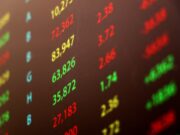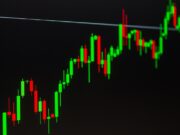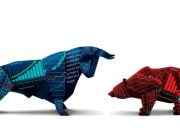Seeking out great stocks to buy is important, but identifying quality investments is only half the battle. Many would say it’s just as essential for investors to know which stocks to steer clear of. A losing stock can eat away at your precious long-term returns. By taking a proactive approach to avoiding losing stocks, you can set yourself up for greater success in your investing journey.
Even the best gardens need pruning, and our team has spotted a few stocks that seem like prime candidates for selling or avoiding. Read on to find out why we believe these particular stocks are poor investment choices and learn how to apply our analysis to your own portfolio management strategy…
Mondelez International Inc. (MDLZ)
Recession fears and concerns around the financial sector have investors seeking refuge in consumer staples stocks to shore up their portfolios. However, based on technical analysis, some of these traditionally defensive tickers now seem overbought. Case in point – Mondelez.
A stock is considered overbought if its 14-day RSI goes above 70 and is typically seen as an indicator to consider cutting back on exposure. By this measure, with an RSI of 89.2, MDLZ tops the list as one of the most overbought names from the S&P 500.
Shares of Mondelez have rallied more than 16% year to date, easily outperforming the S&P 500′s 9.8% advance. The stock is up 1.5% this month, while the broader market index has lost 1.1%. However, Wall Street sees little-to-no upside potential for the stock over the next twelve months. According to FactSet, the average analyst price target for Mondelez implies an upside of just 3%.
[stock_market_widget type=”accordion” template=”extended” color=”#5679FF” assets=”MDLZ” start_expanded=”true” display_currency_symbol=”true” api=”yf”]
Bank of Hawaii (BOH)
With the failure of three regional banks (Silicon Valley Bank, Signature Bank, and First Republic Bank) in the past two months, it seems wise to avoid struggling regional players like Bank of Hawaii. Policymakers made one thing very clear back in March: Uncle Sam will protect depositors, not shareholders. But the ugly truth is that this protection must be limited. If more banks continue to fail, it could outstretch the government’s capacity to maintain this commitment. With such a steep risk involved, avoiding BOH seems like a no-brainer.
BOH gained nearly 9% last week. In the trailing one-month period, the stock tumbled almost 23%. And since the start of this year, it printed a loss of 50% of equity value. The six pros covering the stock give it a Hold rating, with none rating it a Buy.
[stock_market_widget type=”accordion” template=”extended” color=”#5679FF” assets=”BOH” start_expanded=”true” display_currency_symbol=”true” api=”yf”]
Gap Inc. (GPS)
Interest rates in America are now at their highest level in 16 years. While higher rates might tame inflation in the long run, they will likely slow the economy in the near term and negatively impact certain market areas. Clothing retailers such as Gap Inc. tend to suffer when consumers cut back on discretionary spending. This reality has been reflected in Gap’s earnings performance, which have disappointed over multiple quarters. The current high-interest rate climate has proven to be a double whammy for The Gap, coming on the heels of two years of pandemic restrictions at its stores.
The retailer will likely continue struggling while rates remain high and consumers tighten their purse strings. Slowing sales, poor financial results, and pressure from higher interest rates have pushed GPS stock 32% lower in the last year. The company’s share price is now down nearly 70% over the past five years. The current consensus among 20 polled analysts is to Hold Gap shares.
[stock_market_widget type=”accordion” template=”extended” color=”#5679FF” assets=”GPS” start_expanded=”true” display_currency_symbol=”true” api=”yf”]












